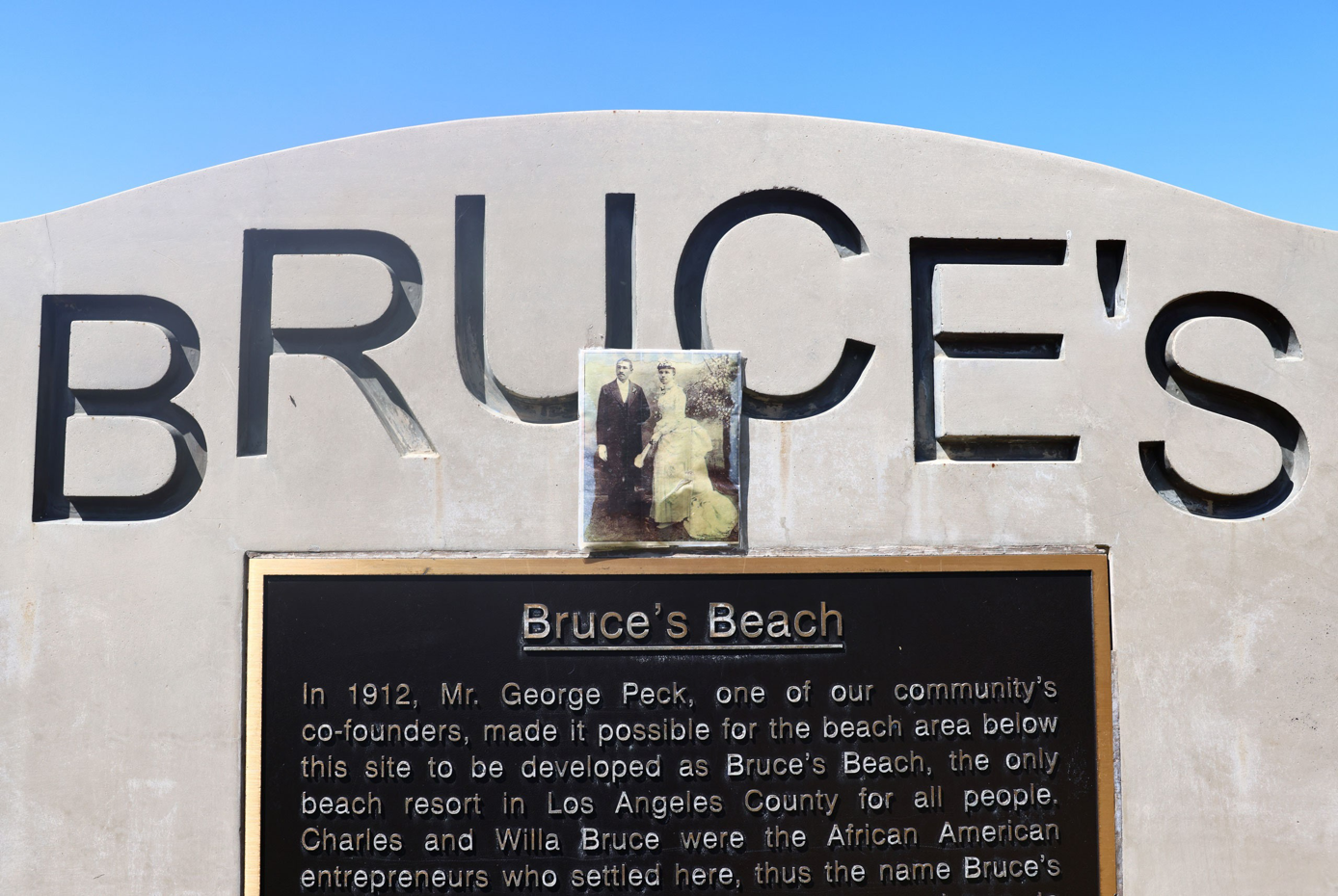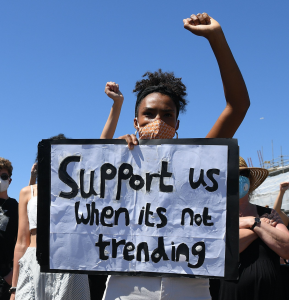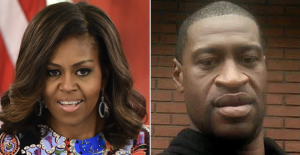Property seized from a Black family a century ago is being returned to their descendants.
More than a hundred years ago, on a stretch of California coast now reminiscent of “Baywatch,” a young Black couple named Charles and Willa Bruce bought the first of two adjacent plots of beachfront property next to some barren dunes in Manhattan Beach, in Los Angeles County. The price was twelve hundred and twenty-five dollars. “Beach culture” didn’t yet exist, and most Americans had no desire to live by the shore. The city was about an hour away from Los Angeles on surface roads, though a light-rail corridor had recently opened, to make the trip a little easier.
Only one other beach in L.A. County welcomed African-Americans at the time—Santa Monica had a segregated patch of sand called the Inkwell—and Black families drove for hours from around Southern California to sunbathe and swim at the Bruces’ property. The Bruces built an overnight lodge and eventually developed a thriving resort. “There was a restaurant on the bottom floor, a dance hall on the top floor. They had a bathhouse next door, then they had a novelty shop . . . and at the bathhouse they rented bathing suits,” Duane Yellow Feather Shepard, a descendant of the Bruces who is also a clan chief of the Pocasset Wampanoag Nation, told me. Standing at the top of a sloping grass park, on a recent weekday morning, he pointed out locations to me. “Down there on the lifeguard property,” he said, gesturing toward a county-lifeguard headquarters, built in 1967, “that’s where our resort was, right on the Strand.”
A handful of Black homeowners built cottages on neighboring plots, and a community grew throughout the nineteen-tens and early twenties. Over time, Californians figured out that the seaside was a nice place to live. White residents in Manhattan Beach objected to summer and weekend crowds near Bruce’s Lodge, as the Bruces’ property came to be known, and there was talk of a “Negro invasion.” On a stretch of land owned by George Peck, a city founder and real-estate developer, unexplained “No Trespassing” signs appeared, which blocked patrons of Bruce’s Lodge from walking directly down to the beach. “They were fake ‘No Trespassing’ signs,” Shepard said. “They weren’t authorized by the city. George Peck put those up there.”
In 1920, a white real-estate broker named George Lindsey moved to Manhattan Beach and set up an office on the north end of town, near Bruce’s Beach. The following year, he asked the city’s board of trustees to “take measures to discourage colored people from establishing homes” in the area. At first, the board resisted, for fear of looking racist. But, in 1923, Lindsey circulated a petition that called for the city to condemn a rectangle of plots that encompassed Bruce’s Lodge—and most Black homes in Manhattan Beach—for the sake of a public park. (Some plots owned by white families were included in the proposal, but they were undeveloped.)
Meanwhile, the Bruces and other Black residents came under violent attack. Tires were deflated, a house was burned; someone lit a cross on a hill above a Black family’s home. A suspected Ku Klux Klan member even tried to burn the Bruces’ resort. Bob Brigham, a student at Fresno State College in the nineteen-fifties, wrote his graduate thesis on this persecution, and interviewed a member of the board of trustees from the era who remembered an arson attempt. This man “recounted a night in the early 1920s when he followed a siren to Bruce’s Lodge where someone (supposedly a Klansman) had set fire to a mattress under the main building,” Brigham wrote. “This produced lots of smoke, but the only fire was in the eyes of Mrs. Bruce as she greeted the white spectators.”
In 1924, Manhattan Beach’s board of trustees backed Lindsey’s proposal and asked L.A. County to condemn the plots owned by the Bruces and other families. The city also passed an ordinance to acquire the rectangle of land through eminent domain, a rarely used legal power that allows governments to seize private property for public use. The Bruces and other Black landowners tried to block the condemnation through legal means, but the effort failed, and the Bruces eventually demanded seventy thousand dollars for their land and business, plus fifty thousand dollars in damages. The larger proceedings dragged on for years, but by 1927 all landowners in the rectangle were forced to sell and vacate their properties.
The buildings were razed. Charles and Willa Bruce eventually got fourteen thousand and five hundred dollars for their once thriving resort. They moved to what’s now South Los Angeles, where they took jobs cooking in someone else’s restaurant. “They died within seven years,” Shepard said. “Willa was gone in seven years, from the stress—she had just lost her mind. And then, one year later, Charles Bruce passed away.”
For decades, the expulsion of Black families from Manhattan Beach was largely ignored. The first significant effort to investigate it was Brigham’s graduate thesis, in 1956. In the nineteen-eighties, Brigham taught me to drive a car at Mira Costa High School, in Manhattan Beach. He was also a history teacher, a typing teacher, and a wrestling coach, among other roles at the school and around town. He used to make sure that the Bruces’ story landed in a local paper every now and then—which is how I learned about it, as a teen-ager. I talked to him about Bruce’s Beach several years ago, as an adult, and used some of the material in a piece of historical fiction. He died in 2019, at the age of ninety-one, but colleagues and students remember him as a cheerful, shuffling, bifocal-wearing character with a knack for asking thorny questions. “He was a strong advocate for many progressive issues, but an advocate whose gentle tone was much more effective than the polarizing rhetoric we commonly hear today,” Dave Holland, a retired English teacher and running coach at Mira Costa, said.
Brigham noticed the first hint of the Bruces’ story when he moved to Manhattan Beach, as a boy, in 1939. He remembered passing the rectangle of appropriated land, which was strewn with trash. “He told me about that, you know, him riding the bus with his mom, on Highland Avenue, past the site,” Mitch Ward, the city’s first and so far only Black mayor, who later worked to publicize the Bruces’ story, said. “And he would say, ‘Mom, how come there’s so many weeds down there? It’s all overgrown. Why is it vacant?’ And his mom told him, ‘Sh-h-h, we don’t talk about that. We just don’t talk about that kind of stuff here in Manhattan Beach.’ ”
But, for years, Brigham kept asking questions about the land. When he began interviewing local residents as a graduate student, city officials finally built a public park there—three decades after condemning the buildings it used to hold—perhaps out of fear that Bruce relatives might find ground in Brigham’s thesis for a lawsuit. The land was graded and planted in 1956. First, it was called City Park, but in the nineteen-sixties it became Bayview Terrace Park, and then, in 1974, Parque Culiacán, to mark a sister-city relationship with Culiacán, Mexico.
Brigham, though, wanted the name to reflect the park’s history. He found an ally in Ward, who’d grown up in Arkansas before eventually moving to California. “My office used to be on South Sepulveda, right behind Bob’s home. Bob would ride his bicycle up and prop his bicycle outside my office and come in, and I would think, Here’s Bob, you know,” Ward recalled. “He was soft-spoken, but he would be communicating things. I don’t know how we started talking about Bruce’s Beach.” Ward had heard about Brigham’s thesis in the nineteen-nineties, before meeting Brigham. “I was like a sponge, trying to soak up Manhattan Beach’s history.”
Ward became mayor in 2006, after three years on the city council. During a push to rename the park, Ward met a surprising amount of resistance. “We learned things about Bruce’s Beach that people just didn’t wanna hear,” he said. “So it was extremely difficult on the council to get it passed.” The sister-city relationship had lapsed in 1989, but some opponents to the proposal argued that Culiacán, Mexico, might find the name change “disrespectful.”
Ward prevailed narrowly. A concrete monument with “Bruce’s Beach Park” engraved on it was installed on the grass in 2007, along with a plaque, written by a civic group, that distorted the area’s history and soft-pedalled the city’s racism. “In 1912, Mr. George Peck, one of our community’s co-founders, made it possible for the beach area below this site to be developed as Bruce’s Beach, the only beach resort in Los Angeles County for all people.” Shepard and other activists have objected that Peck participated in the effort to eject the Bruces, even if he didn’t stop them from buying the land in 1912.
Ward told me that Peck’s descendants had allies on the city council. “You had to give some people something in order for us to get that [winning vote of] 3–2,” he said. “To me, it was not about the words on the plaque. It was about the name and the recognition of the family. So the argument [now] about the plaque, I think that’s a step forward.”
The murder of George Floyd last year sparked a renewed push for the city to acknowledge its crimes against the Bruce family. A community organizer named Kavon Ward, who is not related to Mitch Ward, held a picnic and sit-in at the park. Her group, Justice for Bruce’s Beach, demanded a return of the land to the Bruce family, and also reparations from the city for decades of lost income from the lodge. The appropriated land is a seven-thousand-square-foot slice of open seaside property now valued at about seventy-five million dollars. The city council created a task force to look into the history of the land, but ultimately decided against paying reparations to the Bruces’ descendants for lost income on the family business. It acknowledged and condemned what had happened but refused to draft a formal apology, which carried an extra legal risk, according to sources within the mayor’s office.
Suzanne Hadley, the current mayor, has argued that the past, horrible as it might have been, is past, and that cash reparations would amount to an “illegal gift of public funds.” (With the current city council, Mitch Ward told me, the effort to change the park’s name would be “destined to fail.”) However, the city did offer three hundred and fifty thousand dollars for an art exhibit about the Bruces, and also called for a new, reworded plaque at the park. “I know the city is only putting in three hundred and fifty thousand dollars for an art exhibit that no one asked for—the family doesn’t want that,” Kavon Ward said. “I just find it pretty ironic that they would put money into an art exhibit but don’t want to pay the family restitution.”
But the city doesn’t have the last word. Title to the property shifted in the nineteen-fifties from Manhattan Beach to the state of California, and in the nineties to Los Angeles County. The lifeguard station—run by the county—is still the only structure on the rectangle. A county supervisor, Janice Hahn, set out to return the property. She and the state senator Steven Bradford have now teamed up to release the land from certain restrictions to offer it to the Bruces’ descendants. The proposal passed the county board of supervisors in April, and has no serious opposition at the state level. “I hope it’ll happen in a couple of months,” Hahn told me, though passing both chambers of the California legislature may take until the end of 2021. The Bruces’ descendants plan to lease it back to the county at market value, at least for now. “The county will be the first in the nation to do this, so we feel like we can be a model,” Hahn said.
No other government body in the U.S. has returned so much land to an African-American group. The federal government’s initial and now infamous promise after the Civil War—“forty acres and a mule” to freed Black slaves in the South—was rescinded by President Andrew Johnson. “We’ve had a long history of America taking land from African-Americans, but I don’t know of any situation where they’ve given land back,” Bradford told me. “I think this is very much an unprecedented moment in America to show what government can do, if they’re committed to doing the right thing.”
The crude and illegal methods that Manhattan Beach officials used against the Bruces a century ago make it easier for government officials to act today. Using the ruse of creating a public park to evict the Bruces and other Black families resulted in a piece of largely vacant land—which, in turn, has allowed for a simple, almost elegant solution. As a model for other communities, though, it has limits. “Here’s the thing,” Bradford said. “Land was taken here under a false guise of building a park. It was just to displace African-Americans.” He added that a municipality using eminent domain for “a government need,” such as a highway, was a different story, whether or not the displacement of those living there was fair. In the case of Bruce’s Beach, the lack of need was proven by the city’s own behavior. “There was no need for a park here,” he said.
Mitch Ward, the former mayor, agrees: “It’s a debt that Manhattan Beach owes to the Bruce family.” He also thinks that Brigham would be pleasantly surprised by the transfer. A big historic result, emanating from his mild-mannered graduate thesis in 1956? “I think Bob would be tickled pink,” Ward said.




